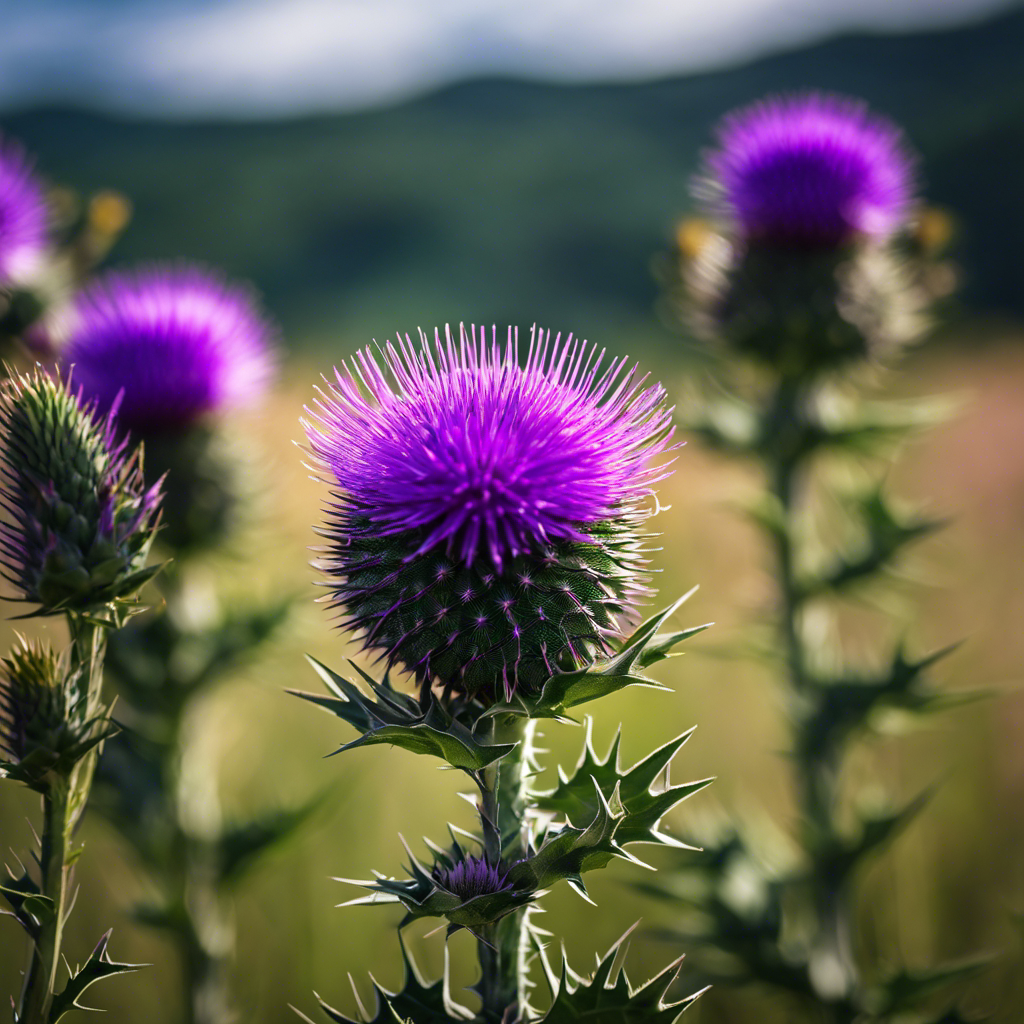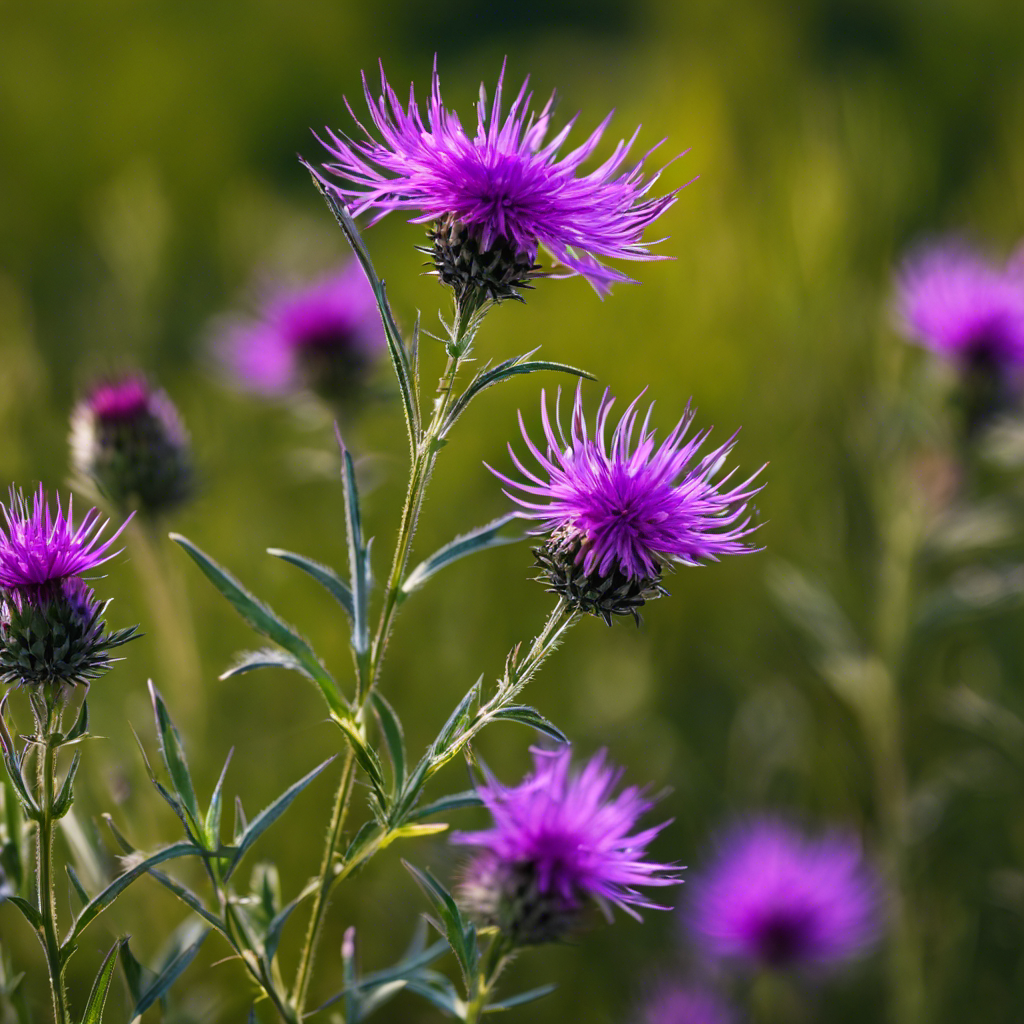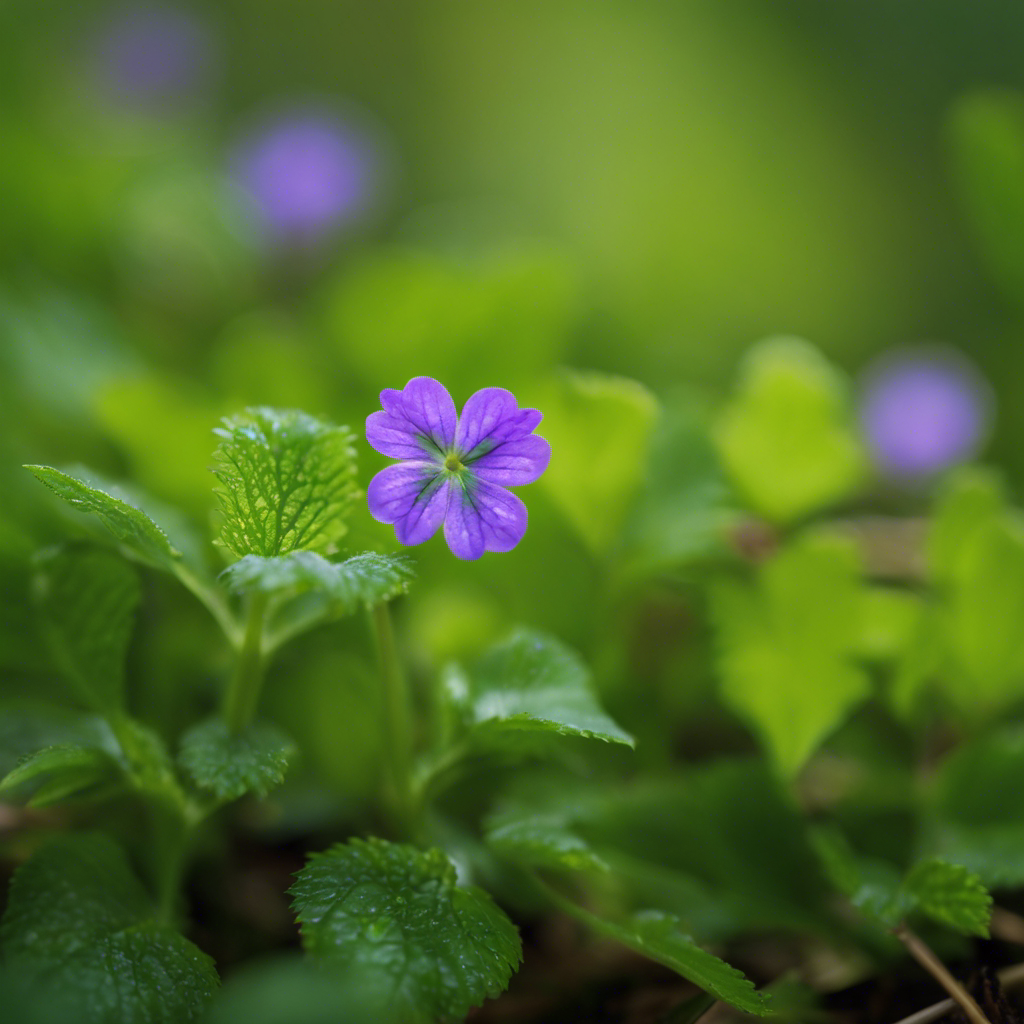As a passionate wildflower enthusiast with years of experience exploring Pennsylvania’s vibrant landscapes, I have developed a deep connection with the diverse array of purple blooms that grace the state.
Each time I encounter the delicate petals of Clasping Venus Looking Glass or the striking hues of Bee Balm, I am reminded of the intricate beauty and significance of these wildflowers in our ecosystem.
Through my experience, I believe that these purple blooms not only add a pop of color to Pennsylvania’s natural environment but also play a crucial role in supporting local pollinators and wildlife.
Join me in uncovering the hidden stories behind these common purple wildflowers in Pennsylvania.
Key Takeaways
- Purple wildflowers in Pennsylvania vary in height, blooming period, ecological impact, and soil preferences.
- Species like Smooth Blue Aster and Bee Balm attract diverse wildlife.
- Common Burdock and Spotted Knapweed are considered noxious weeds in the state.
- Clasping Venus Looking Glass and Creeping Charlie thrive in specific soil and habitat conditions.
Bull Thistle

Bull Thistle, scientifically known as Cirsium vulgare, is a robust biennial plant that thrives in the varied habitats of Pennsylvania, reaching heights of 2-6 feet and displaying vibrant purple blooms during the summer and fall seasons. This plant serves as a crucial resource for pollinators like giant bees and butterflies due to its abundant nectar and pollen.
Apart from its scientific name, Bull Thistle is also commonly referred to as Boar Thistle, Common Thistle, Dodder, and Spear Thistle. Its adaptability to Pennsylvania’s climate and ecosystems makes it a prevalent sight across the state.
The intricate structure of Bull Thistle’s flower head plays a vital role in attracting and facilitating pollination by these insects.
Alfalfa

Alfalfa, scientifically known as Medicago sativa, is a perennial plant that thrives in warmer climates and is extensively utilized as a food crop for animals. This nitrogen-fixing plant plays a crucial role in crop rotation and soil enrichment.
Throughout spring, summer, and fall, alfalfa blossoms attract bees, butterflies, and birds, aiding in pollination and fostering biodiversity. Growing to a mature height of 1-3 feet, alfalfa offers continuous floral interest and sustenance for various pollinators.
Its adaptability and ecological benefits make it a valuable addition to gardens, farms, and natural habitats, enriching the surrounding environment. Observing alfalfa in its blooming stages can provide insight into the interconnectedness of plant life and the ecosystem’s delicate balance.
Smooth Blue Aster

Smooth Blue Aster, a perennial wildflower native to Pennsylvania, thrives in various habitats such as plains, meadows, and hillsides, showcasing attractive blue or purple flowers during the summer and fall seasons. This wildflower, scientifically known as Symphyotrichum laeve, grows up to 1-3 feet tall and is well-suited for USDA Hardiness Zones 3-9, adapting to diverse environmental conditions. Smooth Blue Aster features pappi structures that aid in seed dispersal by the wind, facilitating its reproduction and expansion. Its presence in Pennsylvania contributes significantly to the state’s biodiversity, supporting pollinators like bees and butterflies, thus playing a crucial role in the local ecosystems. Here is a table illustrating some key features of Smooth Blue Aster:
| Feature | Description |
|---|---|
| Scientific Name | Symphyotrichum laeve |
| Flower Color | Blue or Purple |
| Height | 1-3 feet |
| Preferred Zones | USDA Hardiness Zones 3-9 |
| Special Structures | Pappi for seed dispersal |
Winter Vetch

Winter Vetch, scientifically classified as Vicia villosa, is a versatile plant species that can function as an annual, biennial, or perennial, reaching heights of 1-3 feet at maturity. This wildflower blooms in summer and fall, serving as a magnet for pollinators like bees and butterflies.
Winter Vetch plays a crucial role in ecosystems by fixing nitrogen in the soil, making it a beneficial companion plant, especially when paired with crops like tomatoes. While commonly found in meadows, forests, and grasslands, Winter Vetch can be invasive in certain regions.
Despite its invasive tendencies, its nitrogen-fixing abilities make it a valuable addition to both natural ecosystems and agricultural practices, contributing to soil health and biodiversity.
Common Burdock

Common Burdock, a robust biennial plant species prevalent in Pennsylvania, boasts a towering mature height of 4-6 feet and distinctive deep purple flowers that attract various pollinators. This purple wildflower, scientifically known as Arctium minus, blooms from mid-late summer to early-mid fall in pastures, prairies, and hayfields.
Common Burdock’s large leaves can cause skin irritation or allergic reactions in some individuals. Listed as a noxious weed in Pennsylvania, it exhibits aggressive growth habits that can have a negative impact on ecosystems. As a biennial plant, Common Burdock completes its life cycle in two years, flowering in the second year before dispersing seeds for the next generation.
Be cautious around this plant due to its potential skin irritations and invasive nature.
Clasping Venus Looking Glass

Amidst the diverse array of wildflowers that flourish in Pennsylvania, the Clasping Venus Looking Glass stands out with its delicate beauty and unique adaptation to dry sandy soils. This annual wildflower, scientifically known as Triodanis perfoliata, self-pollinates and beckons small butterflies and bees for efficient pollination. The flowers of the Clasping Venus Looking Glass bloom within rounded leaves, creating a visually distinctive appearance that enhances its allure. With a mature size ranging from 6 to 36 inches, this wildflower graces its habitat with elegance and charm. Thriving in specific environmental conditions, particularly dry sandy soils, the Clasping Venus Looking Glass showcases its resilience and beauty in a unique ecological niche.
- Delicate beauty in a rugged landscape.
- Intricate self-pollination mechanisms.
- Vital role in attracting pollinators.
Bee Balm

During the summer months, Bee Balm, scientifically known as Monarda fistulosa, blossoms with fragrant lilac-purple flowers that attract hummingbirds, butterflies, and pollinator bees. This perennial wildflower, suitable for USDA Hardiness Zones 3a-9b, typically reaches a height of 2-4 feet, making it an appealing choice for gardens.
Bee Balm’s vibrant blooms not only enhance landscapes but also serve as a vital food source for pollinators. The aromatic leaves of Bee Balm can be brewed into a flavorful tea, providing additional benefits beyond its visual charm.
Also called Wild Bergamot or Horsemint, Bee Balm plays a crucial role in supporting biodiversity in Pennsylvania’s wildflower ecosystem, offering sustenance and habitat for various pollinating insects and birds.
Spotted Knapweed

Bee Balm, a vibrant contributor to Pennsylvania’s wildflower biodiversity, gives way to the invasive Spotted Knapweed, scientifically known as Centaurea stoebe, known for its aggressive nature and disruptive impact on the local ecosystem. Here are three key points about Spotted Knapweed:
- Purple Hues: Spotted Knapweed blooms in the summer and fall, adorning open fields and roadsides with its striking purple flowers.
- Allelopathic Behavior: This biennial wildflower exhibits allelopathic properties, hindering the growth of surrounding plants and altering the plant community structure.
- Noxious Weed: Considered a noxious weed in Pennsylvania, Spotted Knapweed’s aggressive growth in disturbed habitats poses a significant threat to native flora, impacting the overall balance of the ecosystem.
Creeping Charlie

Creeping Charlie, scientifically known as Glechoma hederacea, is a perennial wildflower commonly thriving in USDA Hardiness Zones 3a-10b. This low-growing plant, also referred to as Ground Ivy, is prevalent in Pennsylvania and is often used as ground cover due to its rapid spread. However, its invasiveness in certain regions warrants caution. Creeping Charlie produces small, tubular purple flowers that bloom during the spring and summer months, adding a splash of color to shaded areas in gardens. Typically reaching a mature size of 5-8 inches, this wildflower can quickly carpet the ground with its attractive foliage. Its ability to thrive in various conditions makes it a popular choice for gardeners seeking a resilient and visually appealing ground cover option.
| Features | Description |
|---|---|
| Scientific Name | Glechoma hederacea |
| Bloom Time | Spring and summer months |
| Height | 5-8 inches |
Purple Loosestrife

Thriving in wetlands and along waterways, Purple Loosestrife, scientifically known as Lythrum salicaria, is an invasive perennial plant notorious for its towering height of up to 10 feet. This aggressive grower poses a significant threat to Pennsylvania’s biodiversity due to its ability to outcompete native flora.
Here are three crucial points regarding Purple Loosestrife:
- Invasive Nature: Purple Loosestrife’s rapid spread in wetlands and water bodies displaces native plants, disrupting the natural balance.
- Negative Impact: Its dense growth hinders water flow, alters habitats, and reduces food sources for local wildlife.
- Control Efforts: Pennsylvania authorities work diligently to eradicate this noxious weed and minimize its detrimental effects on the state’s ecosystems.
Frequently Asked Questions
What Is the Purple Flower Plant in Pennsylvania?
In Pennsylvania, the purple flower plant you’re curious about is the Purple Coneflower (Echinacea purpurea). It’s a native perennial known for its vibrant blooms, drought tolerance, and role in attracting pollinators, enhancing the state’s biodiversity.
What Are the Purple Wildflowers Called?
Purple wildflowers, such as Purple Coneflower, Wild Geranium, Phlox, Spiderwort, and Bee Balm, thrive in Pennsylvania. These blooms attract pollinators, like butterflies and bees, enhancing the region’s biodiversity. Their vibrant hues add a colorful touch to Pennsylvania’s landscapes.
What Are the Purple and White Flowers in Roadside Pa?
In Pennsylvania, you’ll commonly spot Chicory, Queen Anne’s Lace, and Daylilies adorning roadside areas. These vibrant purple and white flowers, native to Europe and Asia, offer a delightful sight and contribute to the state’s scenic beauty.
What Is the Most Common Purple Flower?
The most common purple flower is the Purple Coneflower. Its vibrant petals and cone-shaped center attract pollinators, adding biodiversity. Thriving in various habitats, like Pennsylvania, these perennials bloom in summer, making them a garden favorite.
Conclusion
In conclusion, the vibrant purple wildflowers found in Pennsylvania, such as Bull Thistle, Common Burdock, and Bee Balm, contribute to the diverse and beautiful flora of the state.
These wildflowers play a vital role in attracting pollinators and adding color to the landscape. Their varying sizes, blooming times, and growing conditions make them a unique and essential part of Pennsylvania’s natural environment.
Observing these purple blooms in meadows and fields showcases the beauty and importance of native wildflowers in the ecosystem.

An avid ornithologist, zoologist and biologist with an unwavering passion for birds and wild animals.
Dr. Wilson’s journey in ornithology began in childhood and led him to obtain a Ph.D. in Ornithology from the prestigious Avian Research Institute. He has worked closely with renowned experts in the field and conducted extensive research and field studies globally.
